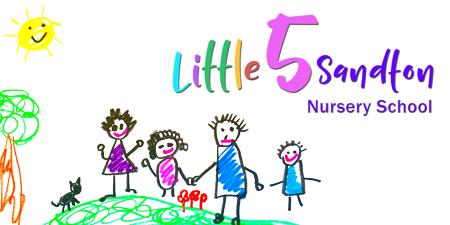It’s our job to ensure that parents are informed and we’re always trying to find better ways of doing this.
Take a read through this eye-opening article on baby’s curiosity and independence:
Your Baby from 19 to 21 Months: Curiosity and Independence
Newest Discoveries
Your toddler is not yet 2, and still he’s acquired so many new skills. He walks with confidence, perhaps even outrunning you on the playground and adding a hop here and there. He can push and pull his toys and discovers that he doesn’t have to crawl up the stairs because he can reach the railing and walk up or down them like you do. He’s becoming a master climber, too, which means he can get into almost anything, even if he has to use the stool in the kitchen to get to the forbidden object. In fact, by day’s end you might be ready to crash on the couch with a magazine, but your toddler is still on the go. Sometimes you can’t help but wish he had an off switch!
Your toddler’s constant motion is doing a lot more than building her muscles (although she is getting a workout!). For instance, walking, running, and climbing on different surfaces helps develop spatial awareness, hand-eye coordination, and balance. At the same time, she is learning about actions and consequences as she solves problems along the way, like how full she can fill a laundry basket with stuffed animals before it’s too heavy to carry — and what will happen if she drops it.
More Picasso Than Rembrandt
Your child is continuing to hone his fine motor skills during this critical period of development. Between 19 and 21 months, he can probably stack up to six blocks to build towers, and he loves scribbling on paper (or on the walls) with a crayon or marker. At this age, it’s the process of drawing — dragging the marker across the page to make a bold line — rather than the finished product, that’s important to them.
Soon after her second birthday, she may begin to add curves, angles, and corners to the lines she draws. Those crucial changes in direction indicate that your toddler might be attempting to draw a picture that represents something real, though you’ll have to ask what it is. It won’t be until your child’s third birthday that she will be able to draw simple pictures that an adult might recognize as a person, a tree, or a house. In the meantime, enjoy your toddler’s scribbling as one more major milestone in her physical and intellectual development.
Experimenting with Aggressive Behaviour
Your child is a joy to be around as he shares his curiosity and enthusiasm for everything from cardboard boxes to grocery store excursions. But then, one day, it happens: You scoop your son up into your arms and he whacks you in the face. Or he sinks his teeth into his brother’s arm for no apparent reason.
Welcome to Toddler World, a place where they can be restless, lawless, and downright ruthless.
Between 19 and 21 months, children may hit, bite, scratch, or exhibit other aggressive behaviours, not because they’re deliberately being mean but simply because it’s another way to experiment. Children this age wonder what will happen if they pull your hair or poke you in the eye. Too young to remember rules from one day to the next, a toddler may repeat aggressive behaviours — even if reactions are negative — especially if the behaviours elicit an exciting response from you.
The Early Terrible Twos
In fact, experts say the so-called terrible twos really start by 18 or 19 months, when hitting and biting become common behaviours for kids. Toddlers have an egocentric view of the world, they can understand their own pain but not the pain of others.
They’re still passionately attached to their caregivers and are sometimes frightened by their own antics and their caregivers’ often surprising responses to them. This exhausting push-pull between independence and dependence, along with a good daily dose of frustration, can lead to intense mood swings. Your child’s most aggressive behaviours should start to subside as he nears his third birthday and learns to articulate his feelings better. Meanwhile, you can marvel at your child’s growing repertoire of abilities.
All of the new physical, emotional, language, and problem-solving skills that kids this age are learning at such a rapid pace, are truly amazing.
Picky Eaters Unite
Without a doubt, one of the most common battlegrounds between parents and toddlers is the high chair. Whereas before you might have been able to get your 1-year-old to eat a good helping of veggies and fruit at each meal, your 19-month-old rebel may eat only pasta — and maybe not much of that.
It’s also true that many children this age prefer familiarity to novelty; it might take up to two dozen tries before they’ll even consider eating a new food. Adding to the automatic “yuck” response to new foods is toddler taste bud sensitivity, which is much greater than an adult’s.
You can trust your child to eat when she’s hungry, don’t fight with her over feeding issues. To a toddler, sometimes the fight is more interesting than anything on their plate.
Exciting Developments in Toddler Play
Between 19 and 21 months, toddlers can’t name colours or shapes, but many can tell the difference and they love sorting things. If you watch your child playing on her own, you may notice that she sorts the red blocks from the blue ones or her dolls from her stuffed animals. It’s exciting for toddlers to identify differences between objects, especially because their hands are dexterous enough to arrange them in satisfying stacks and piles. Further evidence of improving hand skills: When your child stacks plastic rings on a stick, she’ll try putting them in order, from largest to smallest, instead of stacking them randomly, as she might have done in the past.
This sorting behaviour lays the groundwork for more sophisticated problem solving later in life, since so much of abstract thinking depends on our ability to compare and organise things to help make sense of the world.



Holly Robinson
Authorhttps://www.parents.com/toddlers-preschoolers/development/growth/your-baby-from-19-to-21-months-curiosity-and-independence